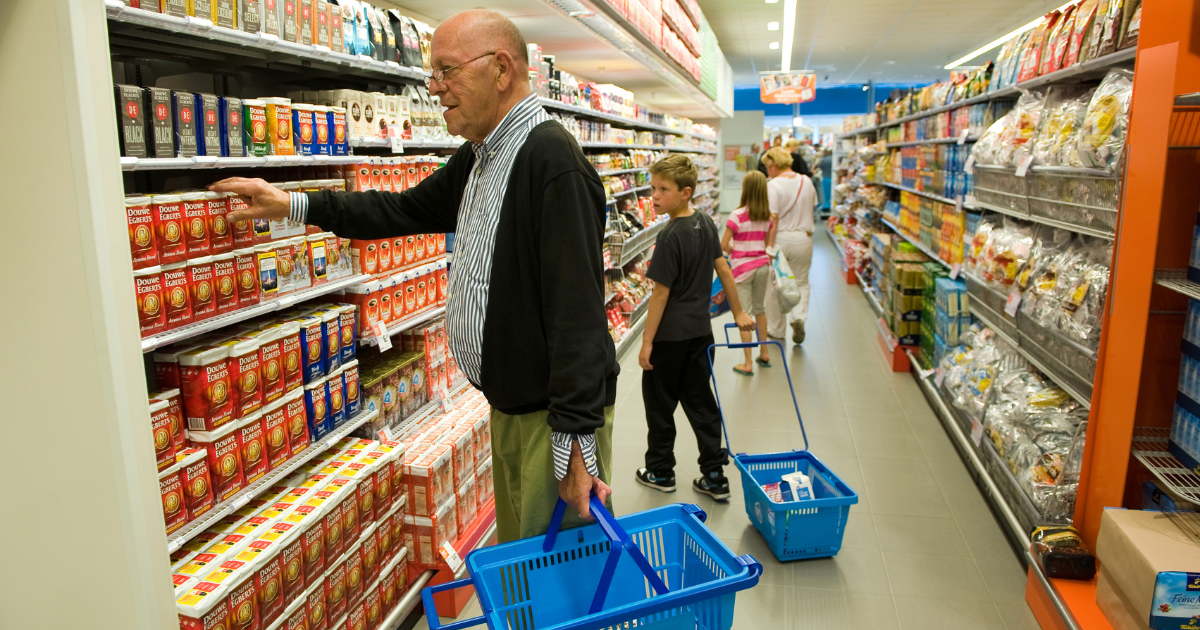
News
October 28, 2025
Price increases for Dutch groceries still higher than European average
Based on recent figures from Statistics Netherlands (CBS), grocery prices in the Netherlands have seen a sharper rise than the European average yet again.
Dutch Shoppers Feel the Squeeze: Grocery Prices Continue to Outpace European Rise
Dutch consumers are still feeling the pinch at the checkout, as new data reveals that grocery prices in the Netherlands are climbing faster than the average seen across Europe. Statistics Netherlands (CBS) has released figures confirming a persistent trend: the cost of filling your shopping basket in the Netherlands is increasing at a rate that surpasses the European average.
While inflation has been a widespread concern across the continent, impacting various sectors, the persistent surge in Dutch grocery prices is raising eyebrows and causing concern for households already grappling with rising energy bills and other cost-of-living pressures. The CBS data points to a continued disparity, indicating that the Netherlands is experiencing a more pronounced inflationary effect on essential food items compared to its European neighbors.
The exact reasons behind this discrepancy are complex and multifaceted. Experts suggest a combination of factors may be contributing to the higher prices. These potentially include increased transportation costs, driven by fluctuating fuel prices and logistical challenges. Furthermore, the price of raw materials used in food production, such as grains and fertilizers, has been subject to global volatility, which could be disproportionately impacting the Netherlands.
Another potential factor is the structure of the Dutch grocery market itself. The level of competition among supermarkets and the bargaining power of suppliers could play a role in determining the final prices consumers pay.
The implications of these rising grocery costs are significant for Dutch households, particularly those with lower incomes. A larger portion of their budget is being allocated to essential food items, leaving less available for other necessities or discretionary spending. This squeeze on household budgets can have a ripple effect on the wider economy, impacting consumer confidence and overall economic growth.
The CBS data serves as a stark reminder of the ongoing challenges faced by Dutch consumers. While efforts are being made to address inflation and support vulnerable households, the latest figures highlight the need for continued vigilance and a comprehensive approach to tackling the specific factors driving up grocery prices in the Netherlands. Consumers will be closely watching to see if future measures can help to bring Dutch grocery price inflation in line with the European average, providing much-needed relief to household budgets.
Dutch consumers are still feeling the pinch at the checkout, as new data reveals that grocery prices in the Netherlands are climbing faster than the average seen across Europe. Statistics Netherlands (CBS) has released figures confirming a persistent trend: the cost of filling your shopping basket in the Netherlands is increasing at a rate that surpasses the European average.
While inflation has been a widespread concern across the continent, impacting various sectors, the persistent surge in Dutch grocery prices is raising eyebrows and causing concern for households already grappling with rising energy bills and other cost-of-living pressures. The CBS data points to a continued disparity, indicating that the Netherlands is experiencing a more pronounced inflationary effect on essential food items compared to its European neighbors.
The exact reasons behind this discrepancy are complex and multifaceted. Experts suggest a combination of factors may be contributing to the higher prices. These potentially include increased transportation costs, driven by fluctuating fuel prices and logistical challenges. Furthermore, the price of raw materials used in food production, such as grains and fertilizers, has been subject to global volatility, which could be disproportionately impacting the Netherlands.
Another potential factor is the structure of the Dutch grocery market itself. The level of competition among supermarkets and the bargaining power of suppliers could play a role in determining the final prices consumers pay.
The implications of these rising grocery costs are significant for Dutch households, particularly those with lower incomes. A larger portion of their budget is being allocated to essential food items, leaving less available for other necessities or discretionary spending. This squeeze on household budgets can have a ripple effect on the wider economy, impacting consumer confidence and overall economic growth.
The CBS data serves as a stark reminder of the ongoing challenges faced by Dutch consumers. While efforts are being made to address inflation and support vulnerable households, the latest figures highlight the need for continued vigilance and a comprehensive approach to tackling the specific factors driving up grocery prices in the Netherlands. Consumers will be closely watching to see if future measures can help to bring Dutch grocery price inflation in line with the European average, providing much-needed relief to household budgets.
Category:
Business